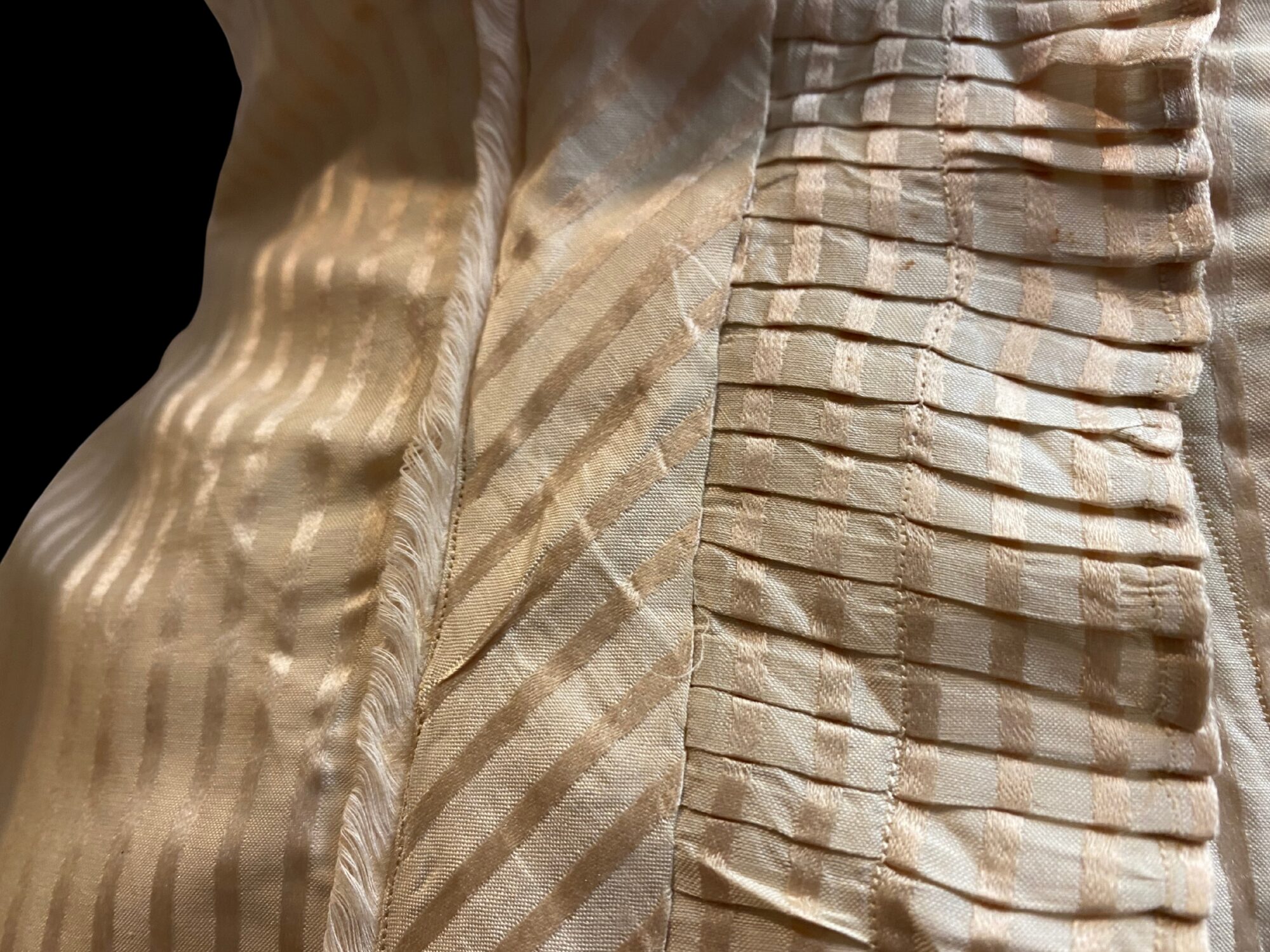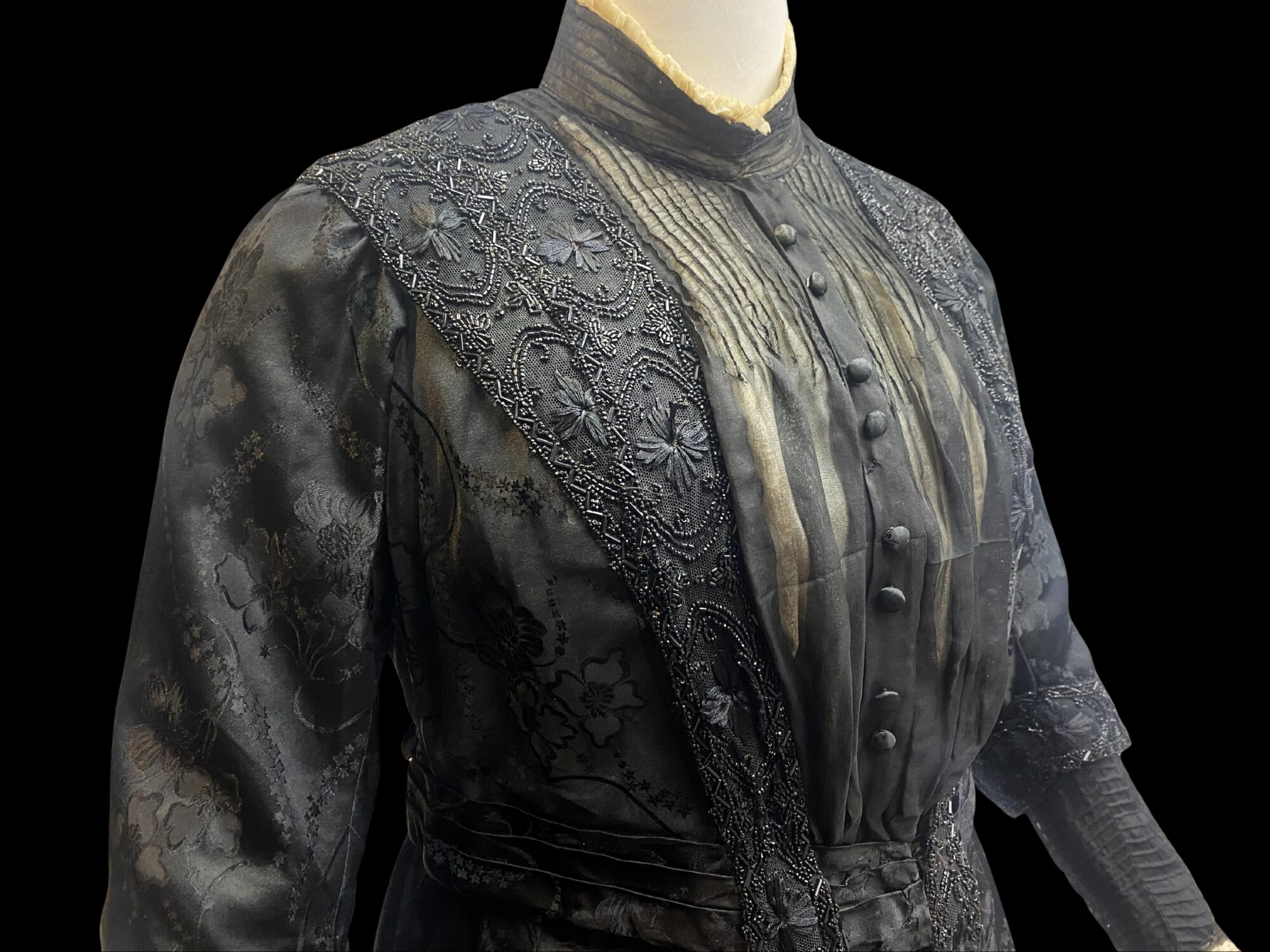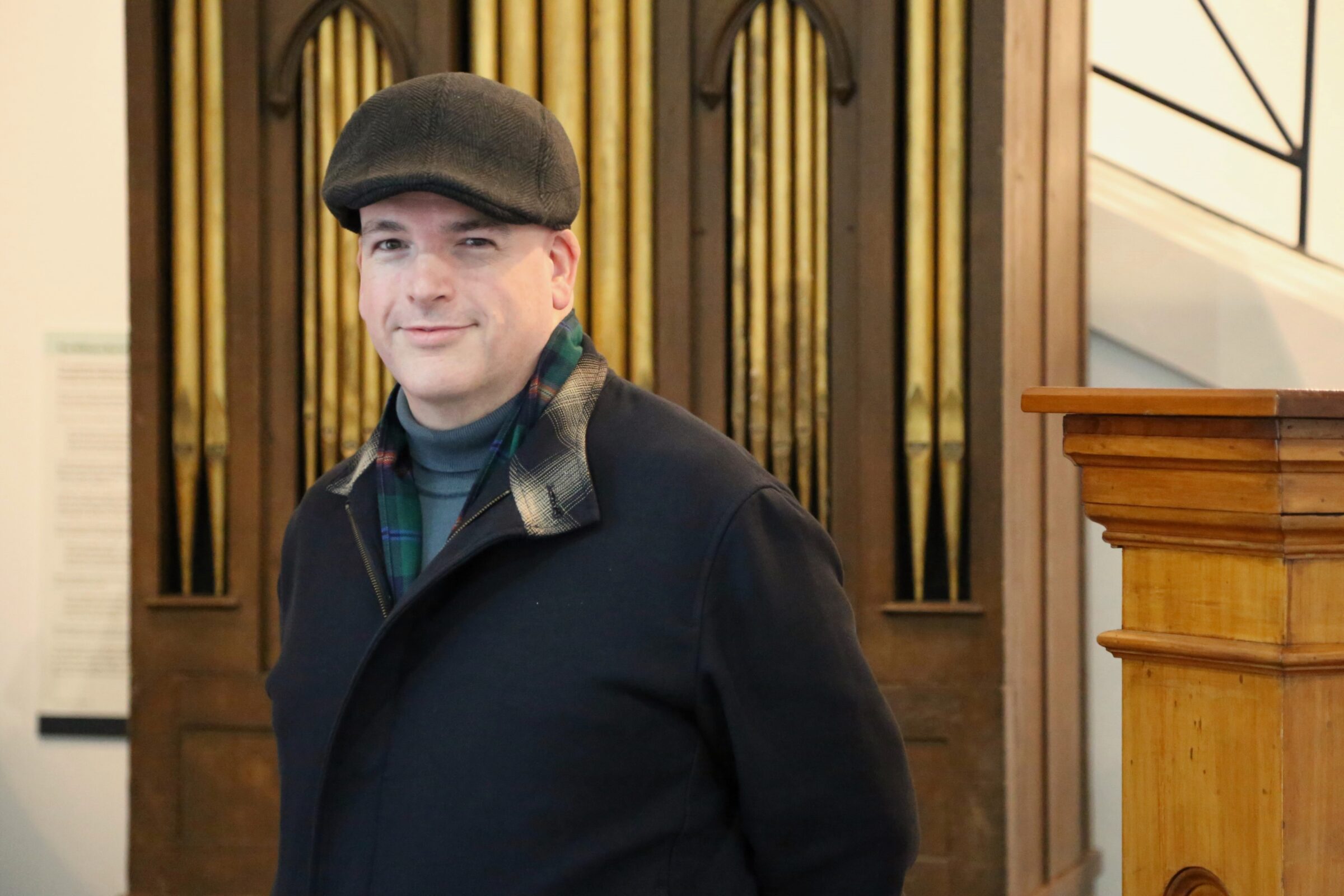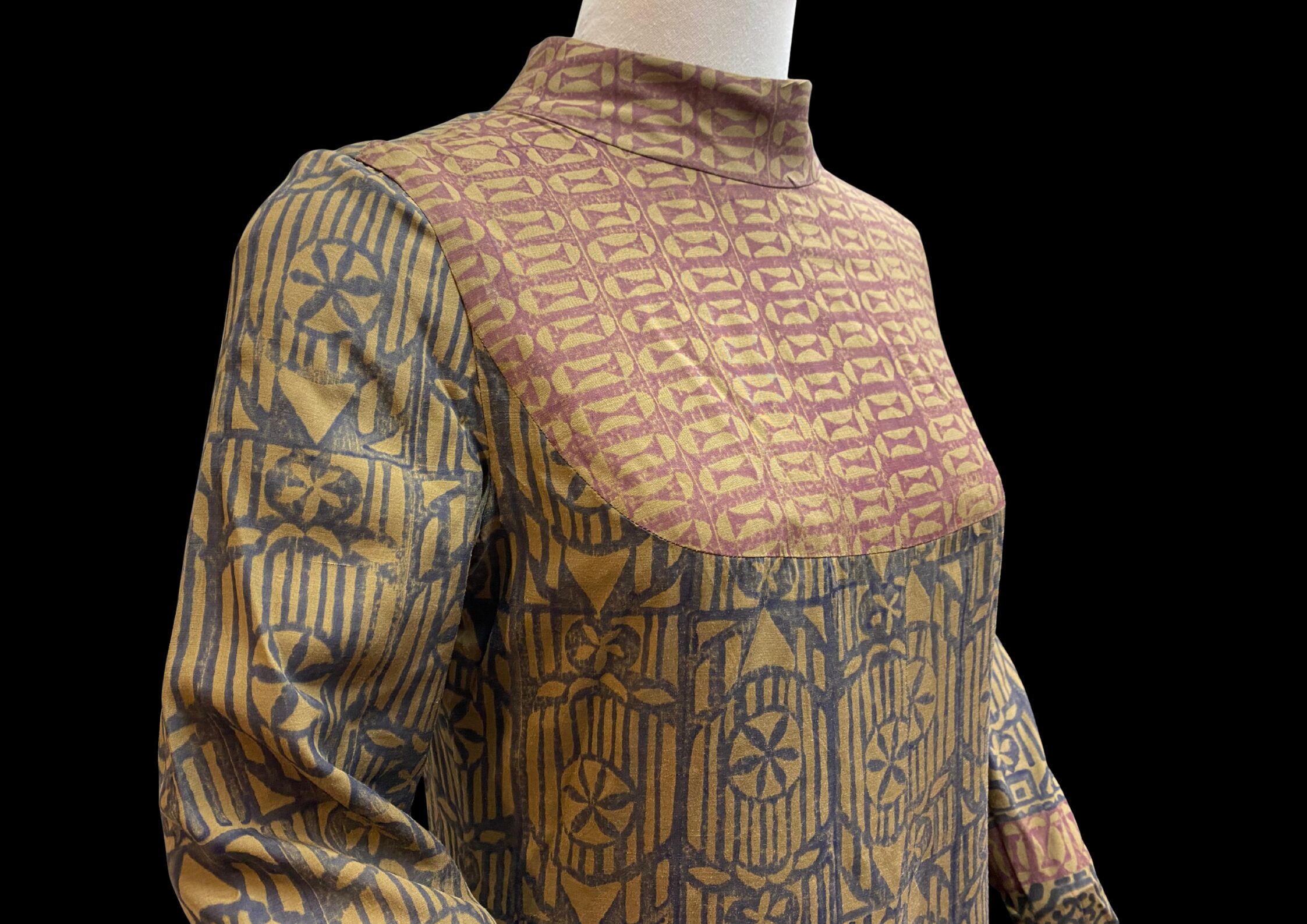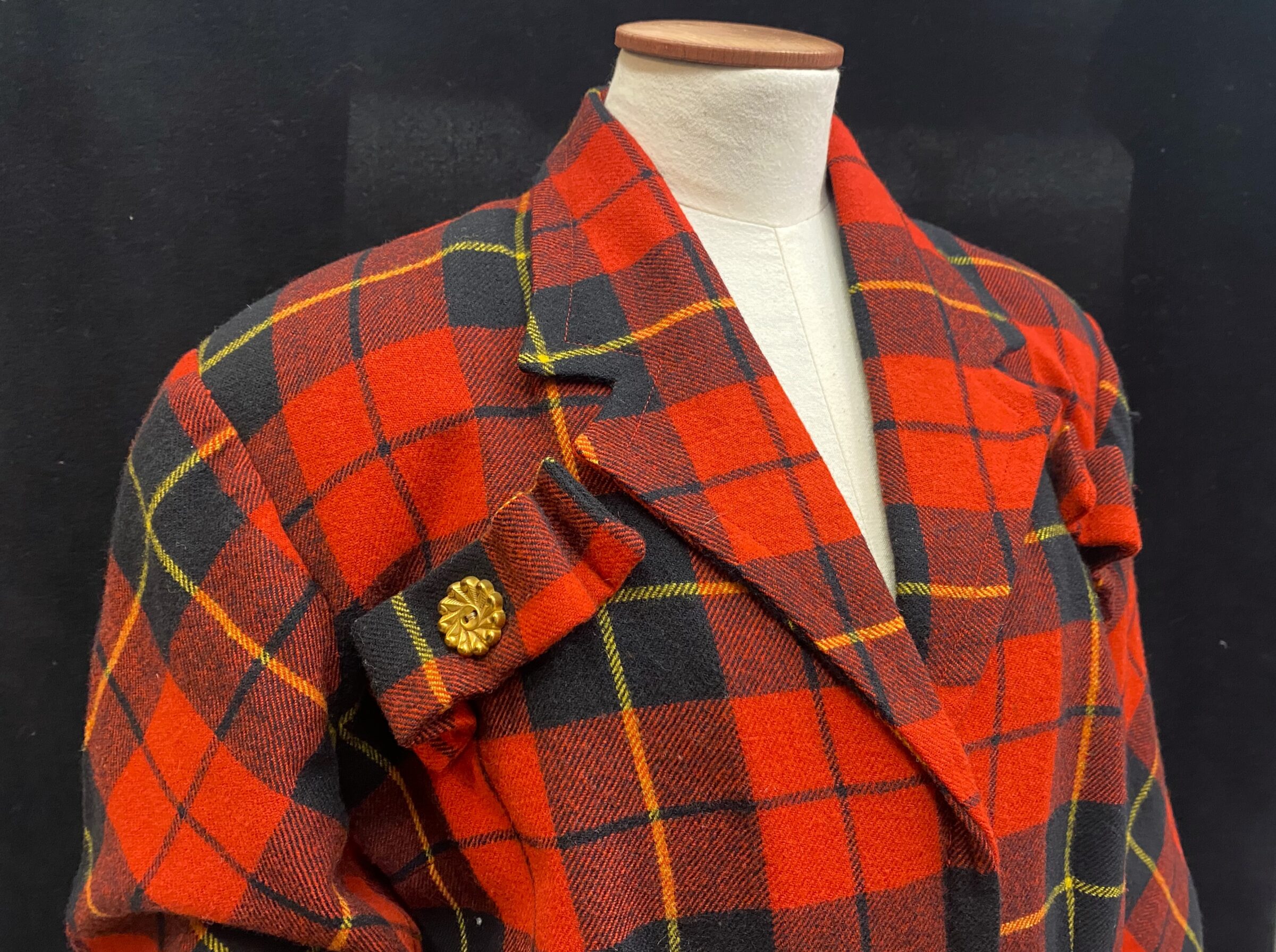Collection Stories
This sumptuous wedding dress was the height of late nineteenth century women’s fashion. At this time, brides married in their best clothes, in all sorts of colours and styles. Wearing white for marriage was a twentieth century convention. For nineteenth century brides, the gowns they wore to be married continued to be their best clothes for years to come.
We can see that versatility and longevity in the details of the dress. Made from silk taffeta and satin, it has a rigidly structured bustle and an abundance of decoration. The gown has a train which can be detached for less formal occasions. There are also stitch marks showing that the side seams have been relaxed.
Twenty-five-year-old Alvine Augusta Voss wore this gown on 15 February 1883. She married 35-year-old, Swedish born, Wilhelm Franke, at the Lutheran Church in Marton. The couple farmed in the Turakina Valley where they raised their ten children. Alvine died in 1921 at the age of 64, while Wilheim lived to the age of 94, dying in 1942.
Descendants of the Frankes believe that the fabric was imported from Germany, where the Voss family had emigrated from, and that the dress was made up in New Zealand. It features machine sewn seams and hand sewn ruching, pleating and buttonholes, evidence of the hours that went into making it. A similar styled dress, in a similar colour, which is also in the Museum’s collection, was worn by Alvine’s sister, Caroline, when she married Robert Ross, the following year.
By Trish Nugent-Lyne, Kaihāpai Taonga/Collections and Curatorial Lead at Whanganui Regional Museum.
Image: Eileen Martin holding her hand tinted photograph of Wilhelm and Alvine Franke, c.1920, by Watson.
Wedding dress made from silk taffeta and satin
Donated by Eileen Martin, 1993
WRM 1993.62
View the full-length image of the dress, photographed by Kathy Greensides.


